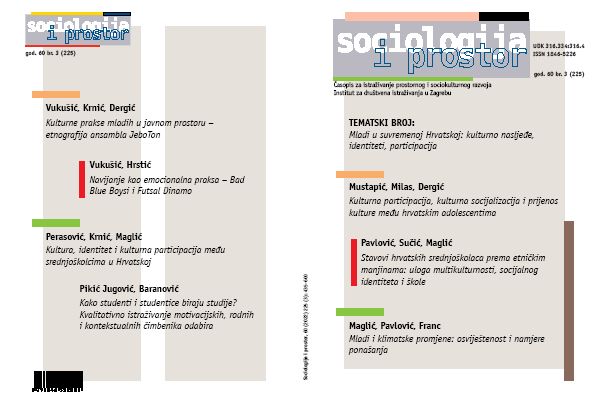Notifications list
How do Students Choose Their Study Courses? Qualitative Research on Motivational, Gender and Contextual Factors
Published: 16.03.2023.

Ivana Pikić Jugović and Branislava Baranović are the authors of the scientific paper How do Students Choose Their Study Courses? Qualitative Research on Motivational, Gender and Contextual Factors. The paper was published in “Sociology and Space”, 60 (3).
From the abstract: The goal of the paper was to investigate, using the qualitative method, how students understand their own process of choosing a study course at the higher education level. This study was grounded in the Eccles et al.’s situated expectancy-value theory. The research questions were the following: 1) What do students recognize as the main reasons for their own course choice decision?, 2) How do they perceive the role of important others in their decision to choose a course?, and 3) How do they understand the relationship between gender stereotypes about studies and occupations, and their own course choice? A semi-structured interview was conducted with 44 first-year university students (22 young men and 22 young women). The thematic analysis of the interviews showed that motivational beliefs, important others and gender stereotypes played different roles in the choice of a study course. Subjective values, especially interest, perceived usefulness and cost of effort are recognized as important motivational influences. Parents, teachers, and especially friends influenced course choices with their advice, information and support. The analysis of gender dimension showed the prevalence of a perception that gender stereotypes did not influence one’s own study course choice. However, when the influence of gender stereotypes was recognized, it was in line with the expectations: students of gender-typical courses stated that they avoided gender non-stereotyped professional choices, while a female student of mechanical engineering described the importance of rejecting stereotypes for her decision to study a typically male course. Practical implications aiming at expanding the spectrum of possible course choices include providing additional information for pupils about study courses and raising their awareness about the influence of gender stereotypes on educational choices.
The paper is available here.
